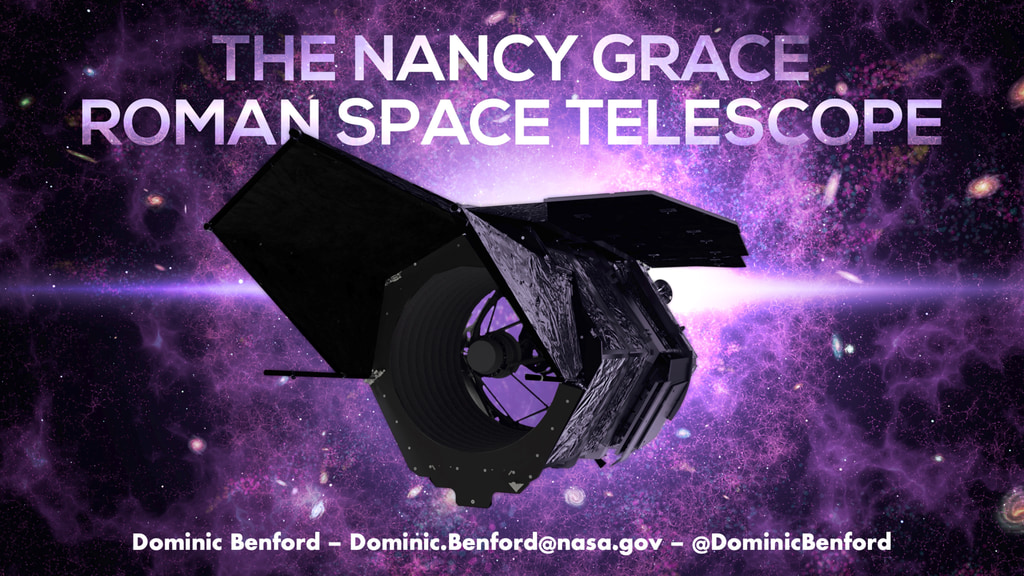Roman Space Telescope High Latitude Wide Area Survey

This illustration compares the relative sizes of the areas of sky covered by two surveys: Roman’s High Latitude Wide Area Survey, outlined in blue, and the largest mosaic led by Hubble, the Cosmological Evolution Survey (COSMOS), shown in red. In current plans, the Roman survey will be more than 1,000 times broader than Hubble’s. Roman will also explore more distant realms of space than most other telescopes have probed in previous efforts to study why the expansion of the universe is speeding up.
Credit: NASA's Goddard Space Flight Center
A team of scientists has forecast the scientific impact of the Nancy Grace Roman Space Telescope’s High Latitude Wide Area Survey on critical questions in cosmology. This observation program will consist of both imaging, which reveals the locations, shapes, sizes, and colors of objects like distant galaxies, and spectroscopy, which involves measuring the intensity of light from those objects at different wavelengths, across the same enormous swath of the universe. Scientists will be able to harness the power of a variety of cross-checking techniques using this rich data set, which promises an unprecedented look into some of cosmology’s most vexing problems.
When it begins work in 2027, Roman will yield results that would be impossible to achieve using existing telescopes. Its impact will be further enhanced by teaming up with other new facilities like the Vera C. Rubin Observatory, a novel wide-field telescope now being built on the summit of Cerro Pachón in Chile. Scheduled to begin full operations by 2024, Rubin’s planned 10-year survey extends across Roman’s five-year primary mission.
The current observing strategy for Roman’s High Latitude Wide Area Survey will enable observations of about 5% of the sky – 2,000 square degrees – over the course of about a year. However, the team illustrated how changing the survey’s design could yield compelling results. The survey could be extended, for example, to cover more of the same area that Rubin will observe. Or it could observe galaxies using a single broad filter, instead of imaging with four separate ones, allowing faster observations while still retaining the survey’s depth.
For More Information
Credits
Please give credit for this item to:
NASA's Goddard Space Flight Center
-
Producer
- Scott Wiessinger (KBR Wyle Services, LLC)
-
Science writer
- Ashley Balzer (ADNET Systems, Inc.)
-
Illustrator
- Scott Wiessinger (KBR Wyle Services, LLC)
Release date
This page was originally published on Tuesday, November 9, 2021.
This page was last updated on Wednesday, May 3, 2023 at 1:43 PM EDT.

